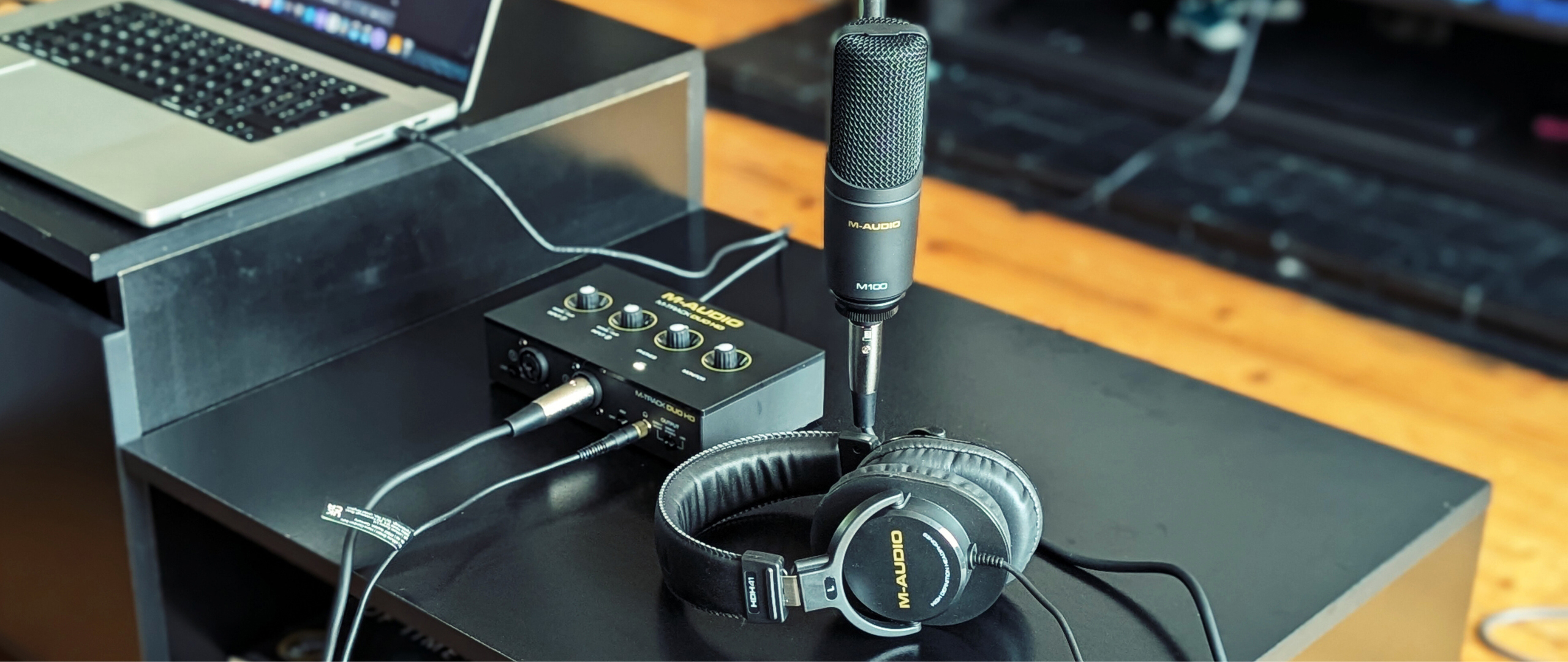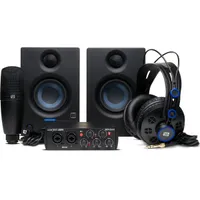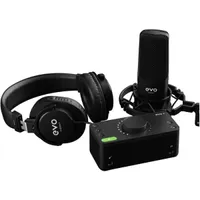MusicRadar Verdict
With everything you need to start recording in one handy package, the M-Audio M-Track Duo HD Producer Pack is a great option for beginners. The interface is good quality and the mic and headphones are surprisingly capable for the relatively little money you’ll need to spend on them.
Pros
- +
Includes everything a beginner producer needs.
- +
Excellent quality audio interface with clear preamps.
- +
Microphone works great on vocals and acoustic instruments.
- +
Headphones do a good job for monitoring and mixing.
Cons
- -
No shockmount included for the condenser microphone.
- -
On-ear headphones aren’t the best for monitoring or mixing.
MusicRadar's got your back
What is it?
If you’re looking to get started with home recording and are unsure of how to go about it, the M-Audio M-Track Duo HD Producer Pack is here to guide you through those baby steps of recording your first pieces of music. It contains an audio interface, a condenser microphone, and a pair of studio headphones, which combined with a computer and some included software, should be all you need to start crafting music.
The beating heart of any home recording setup is the audio interface, and here we have an M-Track Duo, which is a typical 2-input interface at the beginner end of the spectrum. It’s got combi inputs so you can plug in both instruments and microphones with M-Audio’s Crystal mic preamps that promise clarity in your recorded content.
On top of the interface, you’ve got individual gain knobs for each channel, plus a dedicated headphone volume knob and a monitor knob so you can control your output volume separately. There’s no studio monitors included here though, so you’ll need to buy them separately if you want to use the two TRS outputs on the back for monitoring.
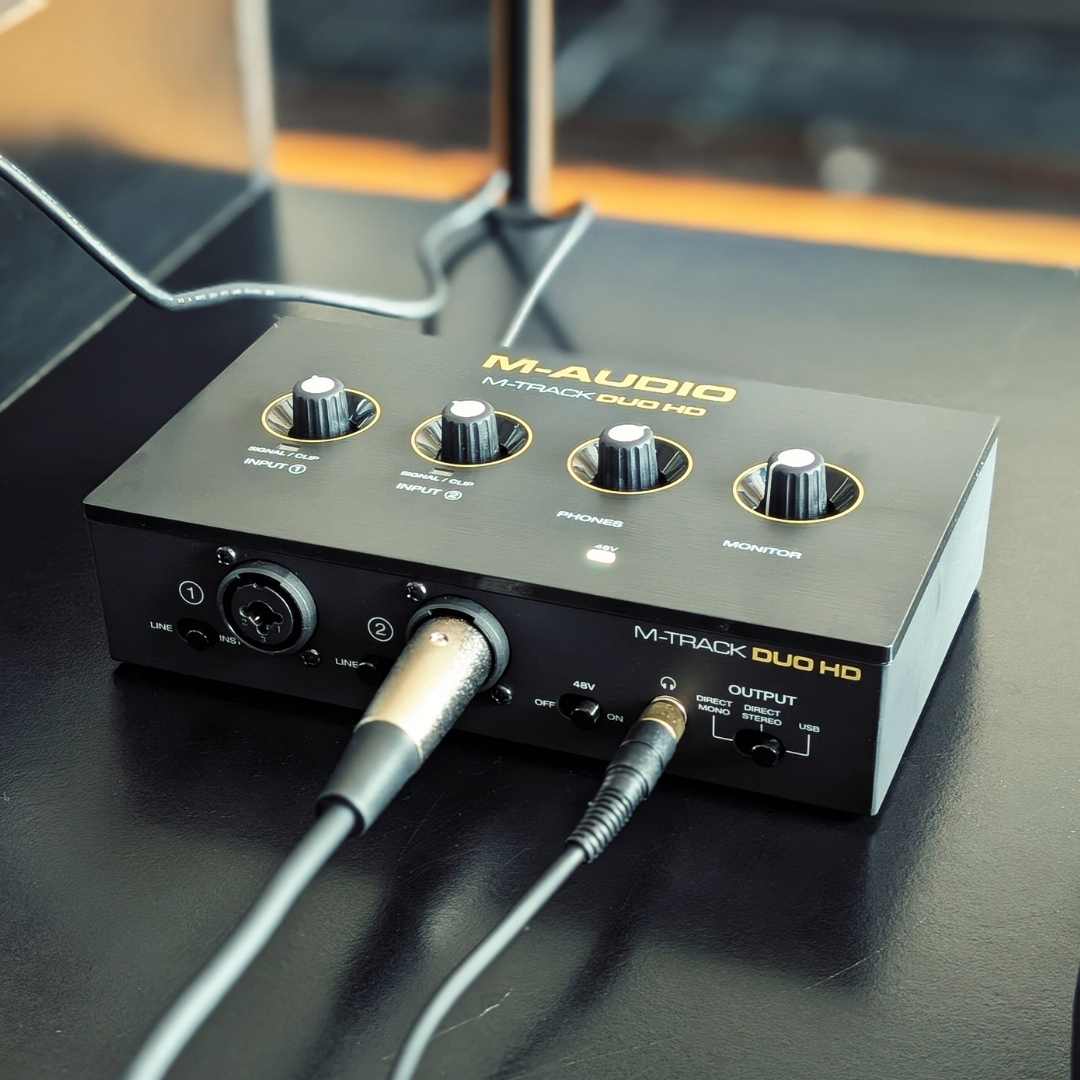
It connects via USB-C, and also features a switch that lets you monitor both of your inputs at the same time in stereo or hear them in mono panned left and right, as well as monitoring only the sound coming from your DAW.
The headphone socket is located on the front, with a 1/4-inch input for connecting the included HDH41 studio headphones. The headphones feature 40mm transducers and boast a 20Hz-20kHz frequency response, ensuring you can hear the full range no matter what genre you’re recording.
Finally, the M100 mic is your tool for recording vocals, guitars, even drums if you like. Condenser microphones are incredibly versatile, so it makes sense to include one in a pack like this. The pack includes the mic clip, carry bag, and XLR cable, but there’s no mic stand, so if you actually want to make use of it, you’ll have to factor that into your purchase.
Performance
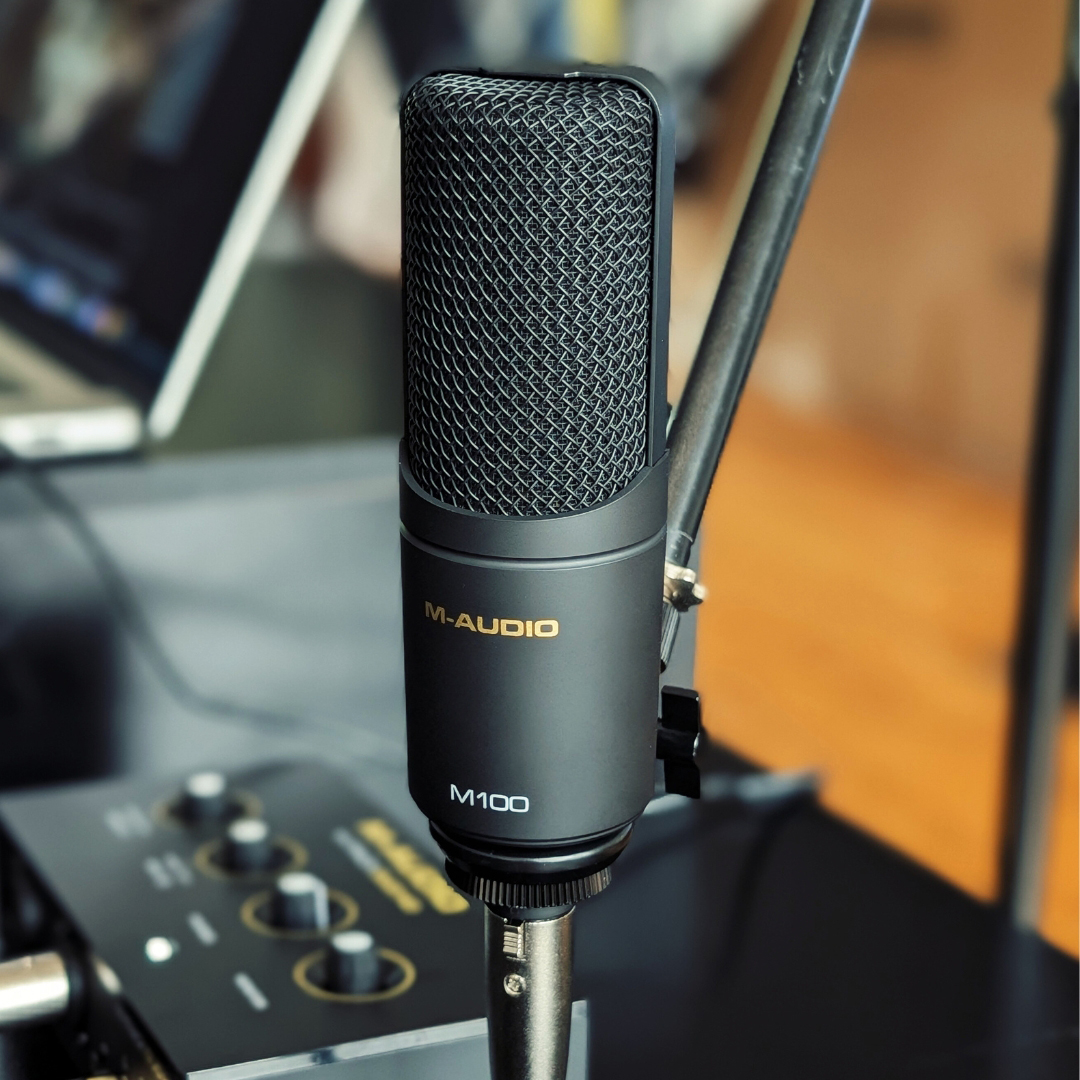
Unboxing the producer pack, I begin by examining the items it includes. The audio interface is very lightweight, a little on the plasticky side, but certainly durable enough for home use. Its weight means it could act as part of a travel rig, but I’d be wary of being too heavy-handed with it versus something more durable feeling like the Focusrite Scarlett 2i2 or Audient iD4.
Want all the hottest music and gear news, reviews, deals, features and more, direct to your inbox? Sign up here.
The knobs on the top are recessed into the chassis, which looks kind of cool, but I could see it quickly filling with dust and debris over time, as typically your interface will stay in the same place. They feel solidly attached with a nice resistance to their travel for making fine adjustments to your input gain and output levels. It’s a similar story with the buttons on the front; they switch across with a satisfying click and feel robust enough to stand the test of time.
The condenser mic has a decent weight to it, with a matte black casing that gives it a nice look. It’s pretty basic, with no additional functionality built in, but at this price point I don't expect much more. It’s the same with the headphones, which feel pretty solid if unspectacular. The cushioning on the pads is decent, although it’s quite thin on the headband, which can prove uncomfortable in very long mixing sessions. It’s also a question of taste as to whether you like on-ear headphones versus over-ear ones.
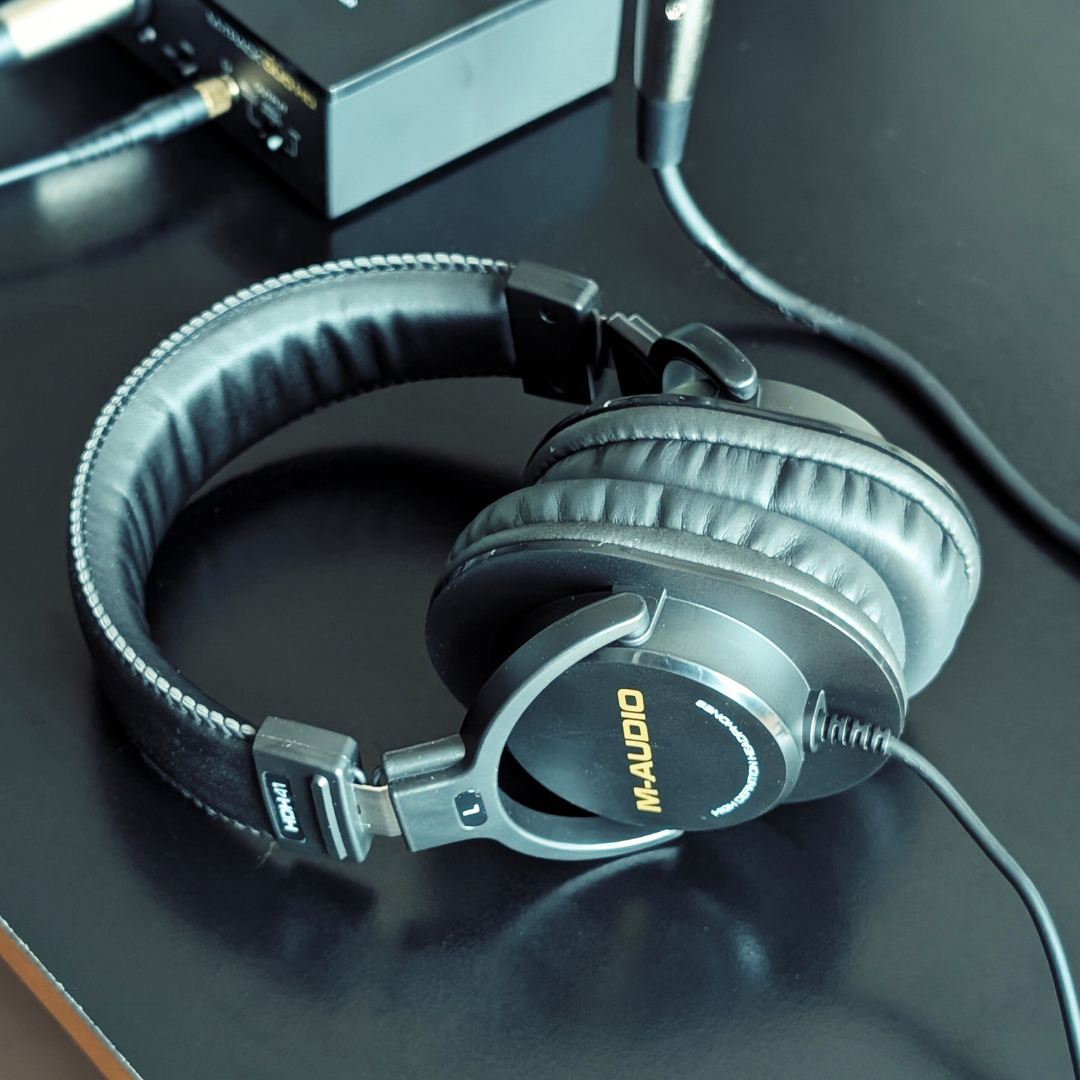
I get myself set up on the sofa in my living room alongside a baritone guitar, small body acoustic guitar, my MacBook Pro, and a copy of Pro Tools with Superior Drummer 3 loaded up. The M-Track Duo HD is picked up immediately by my laptop once I connect it via USB-C, and Pro Tools immediately recognises it as an audio device, so I start recording immediately.
I plug my baritone into input 1 and the condenser into input 2, and proceed to set my levels. There’s not much visual aid on the interface with just a single LED to let me know if I have signal or it's clipping, but I imagine most producers do this in their DAW anyway. A separate LED lets me know when phantom power is engaged, and with a little back and forth between me and my guitar, I can begin laying down some guitar tracks.
Before doing that, I stop to check the dry signal coming in by using the output switch button. Here I can monitor in stereo with channel 1 panned left and channel 2 panned right, or I can monitor both at the same time in mono which is a nice touch. It'll be handy if you want to use the two inputs as stereo inputs for a synth, or get a nice balance if you’re recording two separate instruments at the same time like acoustic guitar and vocals.
I’m a firm believer that at this level, the interface matters very little due to how close together in performance the average home studio interface is. The Duo HD affirms my belief when I record direct with my baritone, giving me a tone that doesn’t feel much different from my much more expensive UA interface. The sound I get is perfectly serviceable, plenty good enough for a demo to show to my band.
With my guitars tracked, I set up the condenser mic in front of my small body acoustic to record something more natural. With the gain boosted the mic picks up a lot of detail as you’d expect from a condenser, and the lack of a shock mount makes itself very apparent here. If you’ve got a singer who moves around a lot or an acoustic guitar player who likes to tap their foot, you’re going to pick up a lot of rumble with the stock clamp.
This isn’t so much of a problem if you’re miking up a guitar cab or going for a vintage 1-mic drum performance, but for more subtle tones like that of a quietly sung part or strummed acoustic guitar, you’re going to pick up some low end rumble that you’ll have to EQ out depending on who’s performing the part.
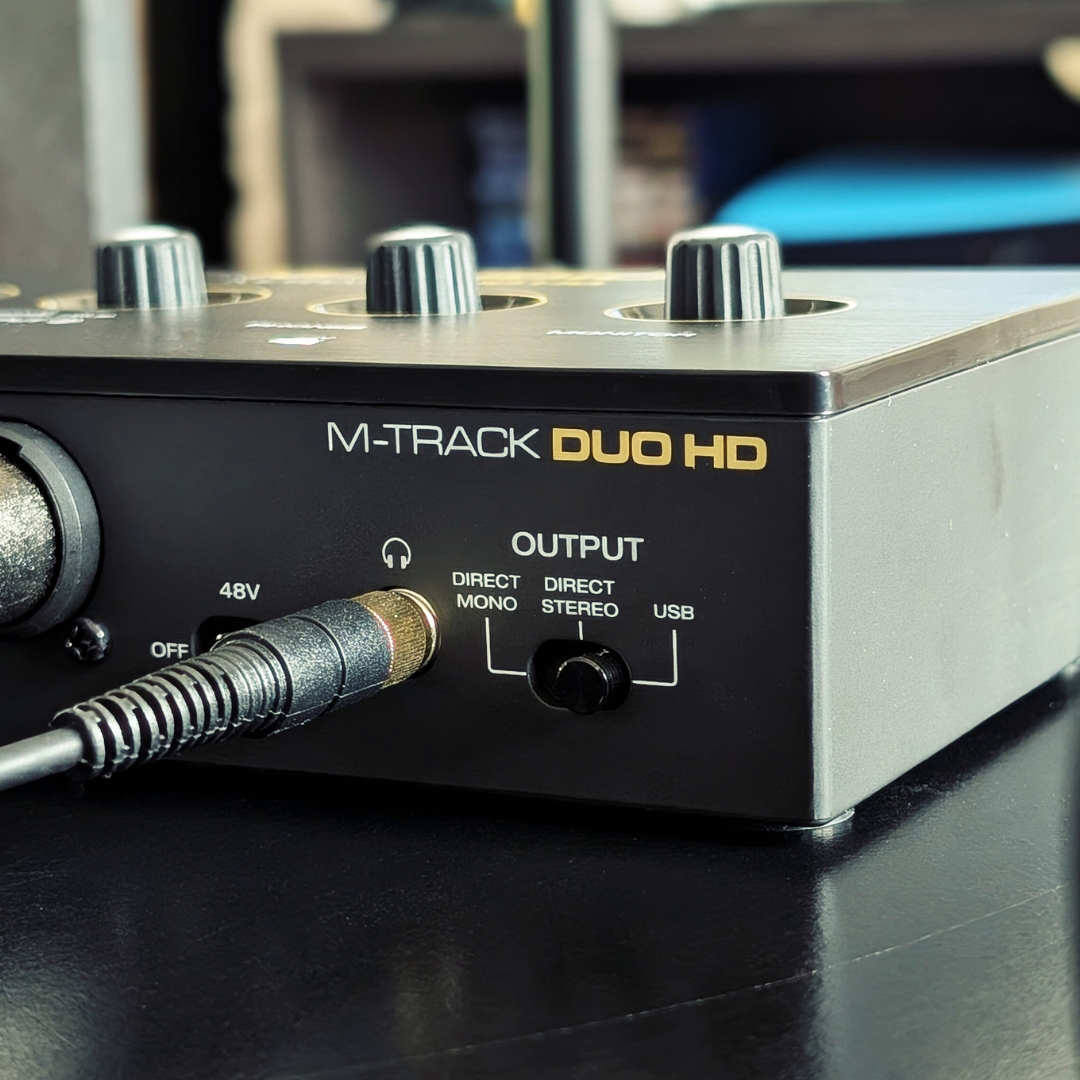
I’m happy with the overall quality though, and the mic grabs plenty of sparkle from my acoustic when I play higher up the neck, with a lot of body when I strum cowboy chords at the other end. Trying some vocals is a similar story, it’s not especially flattering, but certainly able to capture a good take that can be edited to fit nicely into the mix. If you are going to regularly record vocals, you’d do well to grab a pop shield alongside a shock mount to really make the most of it.
With my tracks laid out I set about doing a rudimentary mix utilising the headphones. Admittedly, I’m not a fan of on-ear cans, but I end up surprised at how good they sound. For beginners, mixing with headphones is a good way to start to take the inevitably bad bedroom you’re mixing in out of the equation, and the clarity and soundstage on the HDH41s is pretty good all things considered.
As monitor headphones, especially for vocals, I’d prefer a closed-back set of over-ear headphones, as the HDH41s do let in a fair bit of outside noise which can be off-putting for performers. For mixing duties they’re perfectly capable of getting you into a good position provided you’ve recorded your tracks well. There’s plenty of detail in the sound of the headphones, and I didn’t find myself having any trouble picking out problem frequencies versus my usual, and much more expensive, Beyerdynamics.
Verdict
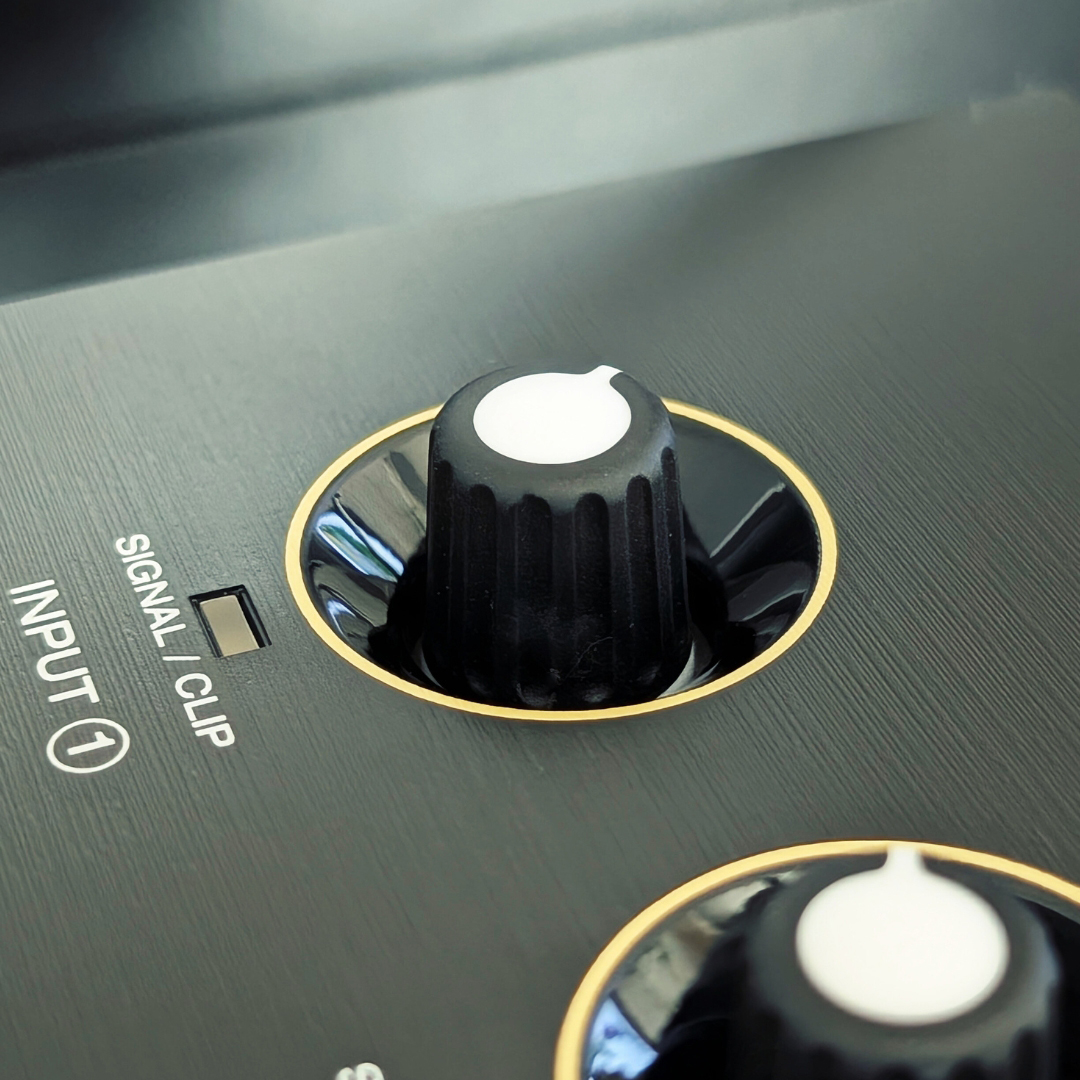
Having started with an M-Audio interface myself a good twenty years ago, it’s nice to see how much the quality of what’s available these days has changed. For below the $/£200 mark, you’ll get a very capable package that will give beginners the tools they need to make good quality recordings.
I’m a firm believer that you get what you put in with any recording device or mic, and with the M-Audio Producer Pack, if you record well-thought-out, tight takes, then you can absolutely get yourself a great quality recording.
MusicRadar verdict: With everything you need to start recording in one handy package, the M-Audio M-Track Duo HD Producer Pack is a great option for beginners. The interface is good quality, and the mic and headphones are surprisingly capable for the relatively little money you’ll need to spend on them.
Hands-on videos
Alternatives
Featuring the same trio of items as the M-Audio Producer pack, Focusrite’s ubiquitous red box is also available with a condenser mic and a pair of studio headphones chucked in. The 2i2 is one of the best interfaces I’ve tested in recent years, so if you have a little more to spend, it’s absolutely worth the money.
If you want an all-in-one solution that includes studio monitors, the Presonus Audiobox 96k Complete bundle gives you an interface, condenser mic, headphones, and a pair of monitors, making it the most complete all-around solution available at the moment.
I’m a big fan of Audient, and their Audient Evo Bundle is another great bundle with an interface, headphones, and a microphone. It also includes a shockmount for the condenser mic which you don’t get with M-Audio Producer Pack, making it excellent value for money.
Specs
Launch price | $199 | €168 | £129 |
Key features: | Connectivity: USB-C Simultaneous I/O: 2 x 2 Number of Preamps: 2 x mic Phantom Power: Yes A/D Resolution: 24-bit/192kHz Analog Inputs: 2 x XLR-1/4" combo (mic/line) Analog Outputs: 2 x 1/4" TRS Headphones: 1 x 1/4" USB: 1 x USB-C |
Dimensions: | 53.4 x 190.5 x 111.7mm (2.1 x 7.5 x 4.4") |
Weight: | 0.36kg (0.80 lbs) |
Contact |

Matt is a Junior Deals Writer here at MusicRadar. He regularly tests and reviews music gear with a focus on audio interfaces, studio headphones, studio monitors, and pretty much anything else recording-related. Matt worked in music retail for 5 years at Dawsons Music and Northwest Guitars and has written for various music sites including Guitar World, Guitar Player, Guitar.com, Ultimate Guitar, and Thomann’s t.blog. A regularly gigging guitarist with over 20 years of experience playing live and producing bands, he's also an alumnus of Spirit Studios, where he studied studio engineering and music production.
You must confirm your public display name before commenting
Please logout and then login again, you will then be prompted to enter your display name.
